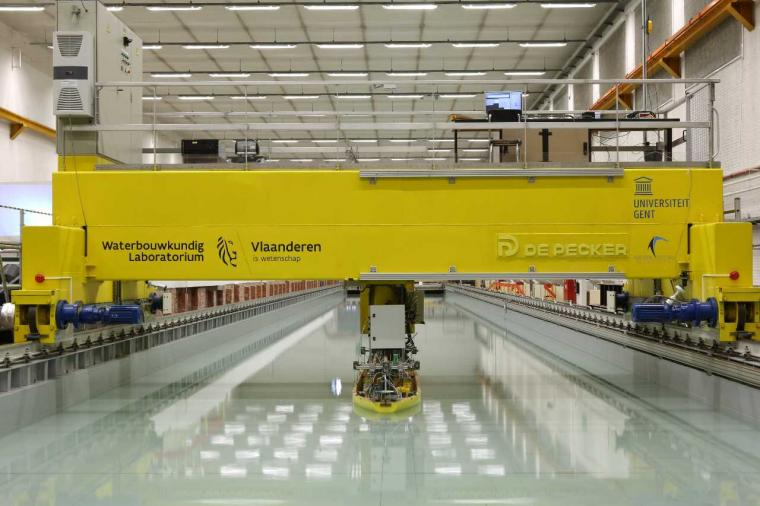The Future of Offshore with Data & AI
The future of offshore construction is data-driven. Wondering why? Data helps to work efficiently by ...
Machine vision
Flanders Hydraulics Research is building a new Maritime Research Center in Ostend, together with UGent and KULeuven. The center will be known as Flanders Maritime Laboratory and will attract visitors from all over the world. Flanders Hydraulics and our universities have a history of 80 years in research on the influence of waves, tides and wind on ships and objects at sea.
At the center of the new research complex is a 200 by 20-meter towing tank. Ship models of up to 8 meters in length can be tested in a controlled environment to study the maneuvering behavior of real ships in shallow water. Kapernikov is building a precise position measurement system for free sailing ship models in this indoor research tank.

Computer simulation of ship operations and interaction allows researchers to compare situations and scenarios in a cost-effective way. But even with today’s advanced simulation techniques, real-life tests with ship models are still a necessity to validate simulation results.
Existing facilities of the maritime research center in Antwerp allow researchers to tow a ship through the water and measure forces or movements resulting from interaction with the water. The towing carriage holds or follows the ship and therefore the ship’s position is known very precisely.

In the new facility in Ostend, researchers want to do experiments with multiple ships interacting with each other. Think of tugboat manipulations or ships crossing each other. However, since only one ship model can be followed by the towing carriage, some ships need to be autonomous.
For such an experiment to be useful for researchers, it is important to measure the positions of those autonomous ship models very accurately. The challenge is to create a position measurement system to do so. Given that the ship models used are 8 meters in size and represent a panamax ship of 366 meters in actual size, the position measurement accuracy should be 45 times higher compared to GPS technology.
As an expert in machine vision, Kapernikov was asked to make an independent assessment of the current state of the art in positioning technology. First, we listened to the customer and converted functional requirements in a technical approach for the project. The idea was to combine the best suited technologies into an integrated system that would best meet the project’s targets.
Various ideas and concepts were evaluated and demonstrated, including the following technologies:
The most suited technologies were combined and validated into a pilot ship model. Combining technologies helped to cancel out positioning errors and inaccuracies that would otherwise have been made by individual technologies.
Flanders Hydraulics Research has found a partner who understands their domain. Kapernikov has proposed a hardware and software architecture that will be a uniform platform to integrate manual control, autopilot algorithms and the position measurement system.
Kapernikov helps the researchers to adopt these new technologies. We like to co-develop solutions together with our customers and perform at our best when challenged to bring the state of art to a production environment.